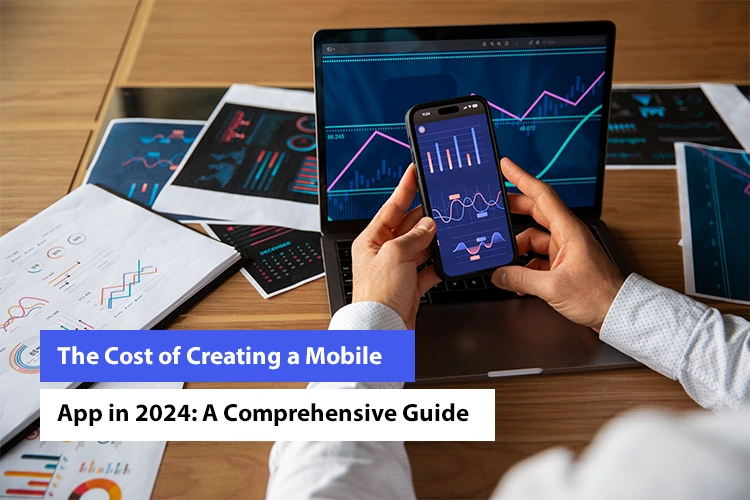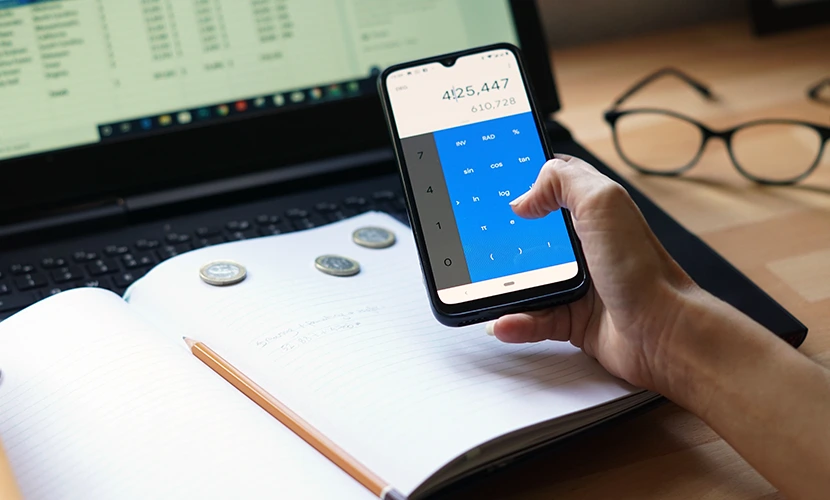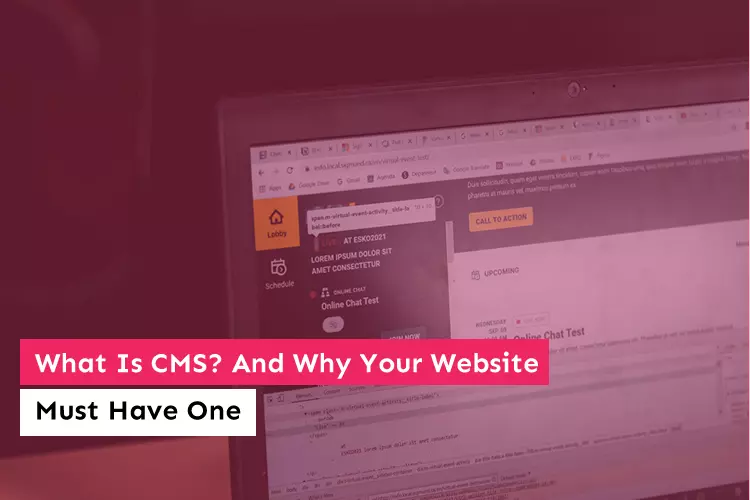How much does it cost to create an app in 2024? A detailed guide

Ever wondered what it takes to turn your brilliant app idea into a reality? How much does it truly cost to create an app that captivates users and brings value to their lives? As the digital era accelerates, mobile app development has become a powerhouse, shaping industries and driving innovation. Did you know that by 2024, the mobile app economy is projected to generate over $935 billion in revenue?
In this blog, we embark on an insightful journey into the world of app development costs in 2024. Unveiling the intricacies that influence your app’s financial roadmap, we’ll dissect the factors behind the scenes – from app complexity to design finesse, platform selection to post-launch upkeep.
Get ready to decode the investment behind crafting a successful app, understand where your resources are best allocated, and uncover cost-saving strategies to maximize your budget’s potential. Let’s delve into the fascinating realm of app development economics.
Factors Influencing App Development Costs

The cost of developing a mobile app in 2024 is a multifaceted equation influenced by several key factors. Understanding these factors is crucial for estimating the budget required for your app development project. Let’s delve deeper into each of these factors to gain a comprehensive understanding:
App Complexity
App complexity is a fundamental factor that significantly affects the overall development cost. Complexity can be categorized into three levels:
- Simple Apps: These apps have basic functionalities, limited features, and straightforward user interfaces. Examples include calculators or to-do list apps.
- Moderate Complexity Apps: These apps offer a broader range of features, might have user accounts, and require more intricate user interactions. Social media apps or weather apps with interactive maps fall into this category.
- Complex Apps: Apps with complex features, intricate user flows, and backend interactions fall here. E-commerce platforms, on-demand services, and social networking apps with messaging systems are examples.
As the complexity increases, development time, testing efforts, and the involvement of skilled developers also rise, contributing to higher costs.
Design and User Experience (UX/UI)
User experience and app design play a pivotal role in user engagement and satisfaction. Investing in an intuitive, visually appealing, and user-friendly design can set your app apart. Design costs encompass:
- UI/UX Design: Creating wireframes, mockups, and interactive prototypes to ensure a seamless user experience.
- Graphics and Visual Assets: Designing icons, images, and other visual elements that align with your app’s branding and purpose.
Quality design involves collaboration between designers, developers, and potentially user experience specialists, increasing the development cost.
Platform Selection
The choice of platforms significantly affects your app development cost. Developing for iOS, Android, or both require different coding languages and design guidelines. Cross-platform frameworks like React Native or Flutter offer a way to develop for multiple platforms with a single codebase, potentially reducing costs.
Features and Functionality
The features you intend to incorporate into your app directly influence development costs. Simple features like user registration, push notifications, or social media sharing might be less expensive to implement. On the other hand, advanced features like real-time chat, payment processing, or augmented reality functionalities require more development effort and subsequently increase costs.
Backend Development
Apps that require server-side functionalities, database management, and data storage demand backend development. Complex apps with user accounts, data synchronization, and content management systems need a robust backend infrastructure. Backend development costs encompass:
- Server Setup: Configuring and maintaining servers to handle user requests and data storage.
- Database Management: Designing and managing databases to store user data, app content, and interactions.
Backend development is essential for apps that rely on cloud storage, user data management, or any form of data processing.
Integration with Third-party Services
Incorporating third-party services such as payment gateways, social media logins, geolocation services, and analytics tools can enhance your app’s functionality. While these services provide valuable features without the need to build from scratch, integrating them often involves additional development work, contributing to the overall cost.
Testing and Quality Assurance
Thorough testing and quality assurance (QA) are vital to delivering a bug-free and user-friendly app. QA efforts encompass:
- Functional Testing: Ensuring all features and functionalities work as intended.
- Performance Testing: Evaluating the app’s responsiveness, speed, and overall performance.
- User Experience Testing: Checking the app’s usability and user flows.
- Security Testing: Identifying vulnerabilities and ensuring data protection.
Testing takes time and requires a dedicated QA team, which can influence the overall development cost.
Security Measures
In the current digital landscape, security is paramount. Implementing robust security measures to protect user data and safeguard against potential breaches is a necessity. Security measures include:
- Data Encryption: Protecting user data during transmission and storage.
- Authentication and Authorization: Ensuring only authorized users can access certain features or data.
- Secure APIs: Developing APIs (Application Programming Interfaces) with security in mind.
While security measures contribute to the development cost, they are essential for building trust with users and complying with data protection regulations.
Understanding the factors that influence app development costs is pivotal for creating an accurate budget and ensuring the successful execution of your mobile app project. Balancing your app’s complexity, design, features, security, and other considerations will help you make informed decisions and deliver a valuable and user-friendly app to your target audience.
Understanding the Cost Breakdown

Creating a mobile app involves a series of stages, each with its associated costs. To estimate the overall budget accurately, it’s essential to break down the development process into distinct phases. Here’s a detailed cost breakdown of the app development journey:
App Development Phases
- Idea and Conceptualization: During this phase, you brainstorm the app’s purpose, target audience, and core features. You might also conduct market research to validate your app idea. Costs in this phase are relatively minimal and involve time spent on idea generation and research.
- Design: Designing your app involves creating wireframes, mockups, and a user interface (UI) that aligns with your brand identity and user experience goals. Design costs can vary depending on the complexity of the app, the number of screens, and the involvement of designers.
- Development: The development phase encompasses writing code to bring your app to life. Costs in this phase depend on factors such as the complexity of the app, the number of features, and the development team’s hourly rates. This phase includes both frontend development (user interface) and backend development (server-side functionalities).
- Testing: Quality assurance and testing are crucial to ensure your app functions flawlessly. QA efforts involve multiple rounds of testing, bug fixing, and fine-tuning. The costs in this phase involve the time and expertise of QA testers.
- Deployment: Launching your app on app stores (like Apple App Store or Google Play Store) incurs costs associated with app store fees. These fees can vary based on the platform and whether you’re publishing for iOS, Android, or both.
- Post-launch: After the app is live, ongoing costs include app maintenance, updates, and potential improvements. Maintenance costs cover bug fixes, security updates, and any unforeseen issues that may arise.
Hourly Rates of Development Teams
App development costs are influenced by the hourly rates of the development team you choose. Rates vary based on factors such as location, expertise, and the specific roles required for your project. For instance:
- Project Managers: They oversee the development process and ensure timely delivery.
- Designers: Responsible for creating user interfaces and visual assets.
- Developers: Frontend and backend developers write the code for your app.
- Quality Assurance Testers: They thoroughly test the app for bugs and issues.
- UX/UI Specialists: Their expertise contributes to creating a seamless user experience.
- Backend Engineers: These developers handle server-side functionalities and database management.
Considering the rates of these team members is essential for accurately estimating development costs. Rates can vary significantly based on geographic location, with North America and Western Europe generally having higher rates compared to Eastern Europe and Asia.
It’s important to note that app development companies or freelancers may provide different pricing models, such as fixed-price contracts or hourly rates. Choosing the right team that aligns with your budget and project needs is a critical decision.
Additional Costs of Mobile App Development

Creating a mobile app involves more than just the initial development phase. There are ongoing and supplementary costs to consider beyond the core development process:
App Maintenance
After launching your app, maintenance is essential to ensure its smooth operation and user satisfaction. Maintenance costs include:
- Bug Fixes: Addressing any issues or glitches that arise after the app’s release.
- Compatibility Updates: Updating the app to work seamlessly with new device models or operating system versions.
- Server Maintenance: Ensuring the backend servers remain operational, secure, and up-to-date.
- Performance Enhancements: Making improvements to the app’s speed and responsiveness based on user feedback.
Proactively maintaining your app helps retain users and prevents negative reviews or uninstallations due to unresolved issues.
Updates and Upgrades
As technology evolves and user needs change, regular updates and upgrades are necessary to keep your app relevant and competitive. These updates might include:
- Feature Enhancements: Adding new functionalities or refining existing features based on user feedback.
- Security Updates: Patching vulnerabilities and strengthening data protection mechanisms.
- User Interface Improvements: Enhancing the app’s design and user experience to match current trends.
Updating your app not only keeps it current but also demonstrates your commitment to user satisfaction and continuous improvement.
Marketing and Promotion
Launching an app without effective marketing efforts can result in limited visibility and user adoption. Marketing costs encompass:
- App Store Optimization (ASO): Optimizing your app’s description, keywords, and visuals to improve its discoverability on app stores.
- Digital Advertising: Running ads on social media platforms, search engines, or other relevant channels to reach your target audience.
- Public Relations: Engaging with media outlets, influencers, and bloggers to generate buzz and reviews for your app.
Investing in marketing and promotion helps increase app downloads, user engagement, and overall success.
Cost-saving Tips for Mobile App Development in 2024

While app development costs can be substantial, there are strategies to optimize your budget without compromising the quality of your app:
Prioritize Features: Begin with essential features in your Minimum Viable Product (MVP) and consider adding advanced functionalities in subsequent versions.
- Cross-platform Development: Opt for cross-platform frameworks like React Native or Flutter to build for multiple platforms using a single codebase.
- Off-the-Shelf Solutions: Utilize existing tools, libraries, and frameworks to save time and development effort.
- Outsource Wisely: Consider outsourcing specific tasks or components to regions with lower hourly rates, while ensuring the quality of work remains high.
- Agile Approach: Adopt an Agile development methodology to accommodate changes and iterations without incurring excessive costs.
- User Feedback: Gather feedback from users after launch to make targeted improvements, reducing the risk of costly development mistakes.
- Optimize Design: Streamline the design process by providing clear design guidelines and feedback to minimize revisions.
By implementing these cost-saving tips, you can strike a balance between creating a high-quality app and managing your budget effectively.
Conclusion
Developing a mobile app in 2024 involves a complex interplay of factors influencing costs. Careful considerations of app complexity, design, platform choice, and features are crucial for a comprehensive budget. Prioritizing quality design, user experience, and security pays off in the long run. Staying updated on industry trends, budgeting for maintenance, and planning updates keep your app competitive. For expert guidance through this journey, consider partnering with experienced teams like Imenso Software, who understand the nuances of app development and can help you create a user-friendly, successful app. Remember, investing thoughtfully ensures your app’s relevance and resonance in the dynamic app market.
Want more information about our services?
Similar Posts

What Is CMS? And Why Your Website Must Have One
You can make a website in 10 minutes now. And it is not just a marketing campaign to entice business owners into trying a new tool. Building websites has never been easier than in 2021. There are a vast number of no-code website builders available on the internet for free. You can create a website […]...
Does Your Business Have A Mobile-Friendly Website? Learn How It Can Be Beneficial
The results of various studies and data analytics point towards one monstrously rising trend – the penetration of mobile devices. Take this study from Statista, which calculated that till October 2020, there are around 4.66 billion active mobile phone users globally. That is around 56% of the world population. ...

Why Businesses Prefer PHP: Latest Trends of PHP Development to Expect in 2023
Since the PHP web development market is always changing, it is challenging for many businesses to prosper in the digital era. To remain competitive and solidify their position in the industry, PHP web development companies must stay up with the always-evolving trends. To maintain your business one step ahead of the competition, you need an […]...






